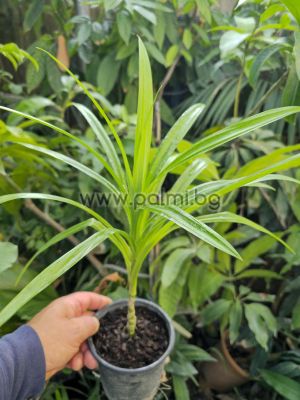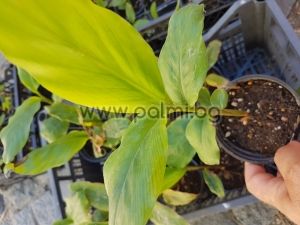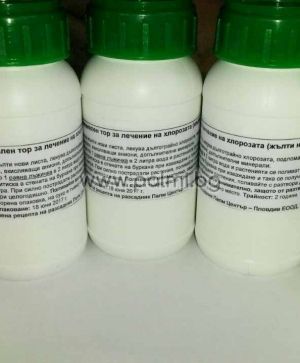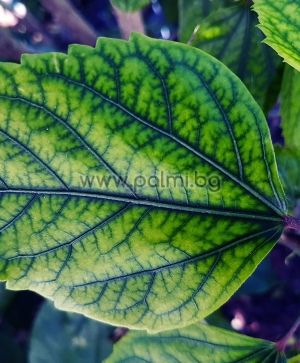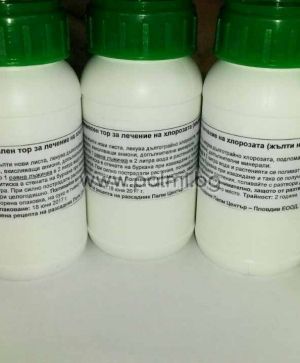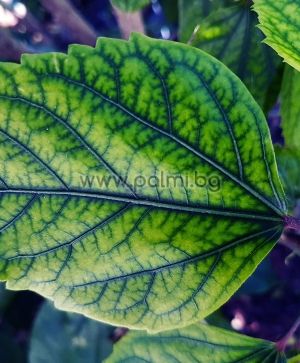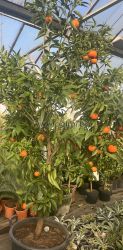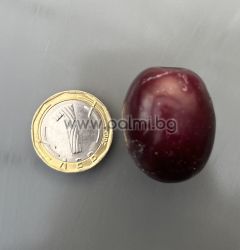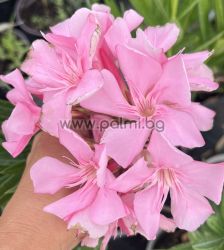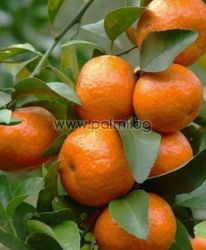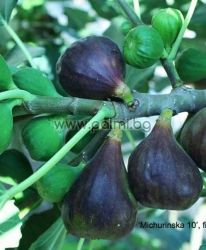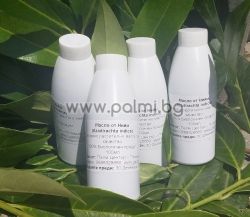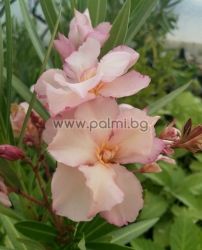Tropical fruiting plants
Tropical fruiting plants
Edible, fragrant Pandan
Pandanus amaryllifolius – the aromatic secret of Southeast Asia
Pandanus amaryllifolius is an evergreen plant from the genus Pandanus – a large family of over 700 species, commonly known as “screw pines” because of the characteristic spiral arrangement of their leaves. In nature, some members of the genus grow to the size of trees and are used for weaving, construction, and even as natural fragrances. Our humble Pandanus amaryllifolius, however, is most highly valued in the kitchen – its leaves carry a unique aroma that lies at the heart of traditional gastronomy in Thailand, Malaysia, and Indonesia. This species was developed through centuries of human selection and is not known in the wild. Unlike its wild relatives, the edible pandan has no spines on its leaves.
Interestingly, the scent of the raw leaves is quite concentrated and, to the untrained nose, can even resemble smelly socks. But this is exactly where the plant’s magic lies – once cooked, the aroma transforms completely. Pandan leaves are used in many of Asia’s best-known dishes, including the famous mango sticky rice. Just a few leaves added to a large pot of rice impart the characteristic Asian flavor and fragrance, turning a simple meal into a remarkable culinary experience with a delicate, sweet aroma often compared to vanilla and jasmine.
Growing at home:
-
Light: prefers bright, indirect light (east, north, or west-facing window).
-
Temperature: a warmth-loving plant; does not tolerate temperatures below 18°C.
-
Watering: moisture-loving; the soil should be kept consistently moist but not waterlogged.
-
Humidity: higher humidity is beneficial, but the plant also grows well in normal household conditions.
Pandanus amaryllifolius forms a compact rosette of fresh green leaves – a beautiful ornamental plant that combines exotic appearance with practical use in the kitchen.
Availability: 6 pcs
True Cardamom
Elettaria cardamomum, True Cardamom
Cardamom Plant (Elettaria cardamomum) – Exotic Aromatic Herb
Elettaria cardamomum, commonly known as cardamom, is a perennial tropical plant from the ginger family (Zingiberaceae) and one of the world’s most valued spices. Native to the rainforests of southern India and Sri Lanka, this plant is prized for both its intense aroma and its attractive ornamental appearance.
The cardamom plant features upright green stems and long, lance-shaped leaves with a lush, vibrant color. Under suitable growing conditions, it produces delicate flowers that later develop into aromatic seed pods—the source of cardamom spice widely used in cooking, herbal remedies, and natural cosmetics.
Cardamom thrives in warm environments with high humidity and indirect light. It can be successfully grown in pots indoors, in greenhouses, or in sheltered outdoor spaces in mild climates. Beyond its culinary value, Elettaria cardamomum adds an exotic, tropical touch to any plant collection.
Key benefits:
-
Aromatic and decorative tropical plant
-
Suitable for indoor and greenhouse cultivation
-
Source of natural cardamom spice
-
Ideal for herb and exotic plant collections
Availability: 58 pcs
300 g fertilizer for treatment of chlorosis
Fertilizer concentrate for chlorosis treatment
Special blend, prevents the appearance of yellow new leaves, treats long-lasting chlorosis, supports quality growth
Ingredients: Iron salts, magnesium salts, acidifying ions, additional minerals.
Application: Dissolve 1 tablespoon in 1 gallon of tap water and water the plants abundantly every 2 to 4 weeks. In case of severely damaged plants, apply the fertilizer every 2 weeks until green and quality new growth is developped! Could be applied all year round to potted plants. Use with caution to avoid rust spots on any surrounding surfaces! Please note, that this fertilizer will affect mostly the new growth, not the old leaves that are already damaged. Do not overdose!
Storage: In a tightly closed package, in a dry and dark place. Durability: 2 years.
Net: 10.5 oz (300 gr)
Own recipe of the nursery Palm Center-Plovdiv Ltd., Bulgaria, www.palmi.bg
Availability: 6 pcs
200 g fertilizer for treatment of chlorosis
Fertilizer concentrate for chlorosis treatment
Special blend, prevents the appearance of yellow new leaves, treats long-lasting chlorosis, supports quality growth
Ingredients: Iron salts, magnesium salts, acidifying ions, additional minerals.
Application: Dissolve 1 tablespoon in 1 gallon of tap water and water the plants abundantly every 2 to 4 weeks. In case of severely damaged plants, apply the fertilizer every 2 weeks until green and quality new growth is developped! Could be applied all year round to potted plants. Use with caution to avoid rust spots on any surrounding surfaces! Please note, that this fertilizer will affect mostly the new growth, not the old leaves that are already damaged. Do not overdose!
Storage: In a tightly closed package, in a dry and dark place. Durability: 2 years.
Net: 7 oz (200 gr)
Own recipe of the nursery Palm Center-Plovdiv Ltd., Bulgaria, www.palmi.bg
Availability: 29 pcs

